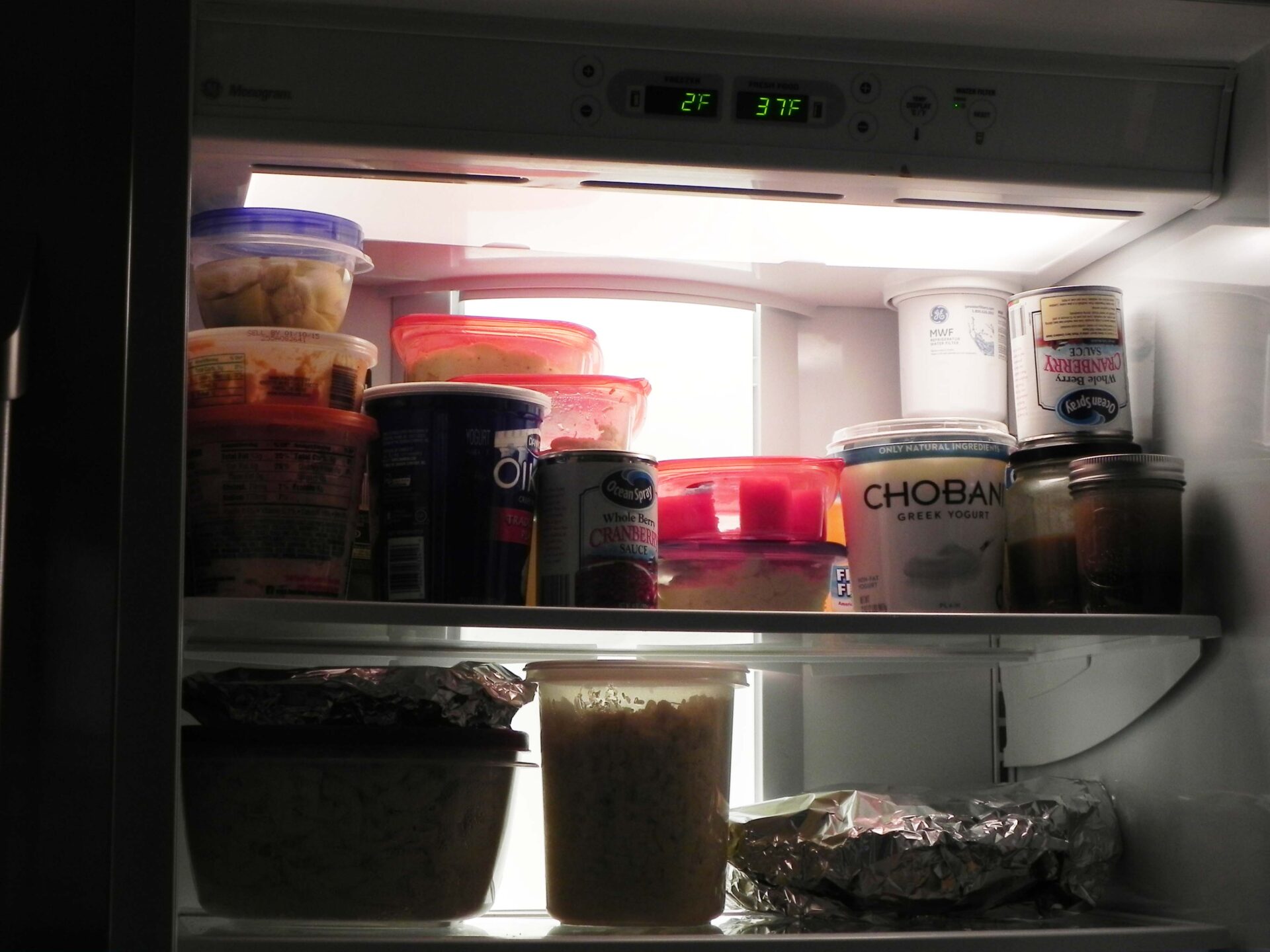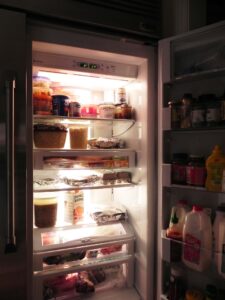
Our electricity has gone out three times in the past two weeks. The latest power outage occurred four days before Thanksgiving, when one fridge was filled with 30 pounds of fresh turkey and just-made chicken stock, and the other was filled with five custard-based pies and assorted prepped ingredients for holiday side dishes.
I was on-my-knees-giving-thanks when the power came back on at the two-hour mark.
So what is a person to do about the foods in the fridge and freezer during and after a power outage?
 Whatever else you do, DO NOT OPEN THE FRIDGE OR FREEZER DOOR once the power is out, at least as long as there is hope the power will come back on within a period when the food is still viable.
Whatever else you do, DO NOT OPEN THE FRIDGE OR FREEZER DOOR once the power is out, at least as long as there is hope the power will come back on within a period when the food is still viable.
Power loss during cold months is not as much of a problem as hot-weather power losses. There are temperature milestones that help the consumer know when it’s safe to keep the food and when to discard it. Here are the rules for when to toss.
FRIDGE: Temperature rises above 40˚F more than 2 hours — DISCARD
- All raw meats
- Dairy products (except butter and hard cheeses such as Parmesan)
- Sauces
- Cut fresh fruit
- Cooked or fresh pasta
- Pasta salads
- Cream-based salad dressings
- Refrigerator rolls and biscuit dough
- Cookie dough
- Cooked rice and potatoes
- Any cooked casseroles, stews or veggies
- Pre-cut, prewashed packaged greens
- Opened vegetable juices, potato salad
- Tofu
- Opened jars or cans of anything
- Fish sauce and oyster sauce
FRIDGE: Temperature rises above 50˚F 8 hours or longer — DISCARD
- Open jars of mayonnaise
- Tartar sauce
- Horseradish.
FREEZER: Temperature rises above 40˚F more than 2 hours — DISCARD ALL Frozen foods may be refrozen if they still retain ice crystals and feel cold, AND IF the temperature in the freezer never rose above 40˚F.
 If the fridge and freezer lost power or died while owner was away or as a result of catastrophic natural disaster, those odors from rotting food may have penetrated the appliance system. May survivors of Hurricanes Katrina and Sandy had to discard theirs for this reason. But modern refrigerators and freezers carry a hefty price tag, so it is worth attempting to restore them instead of tossing them.
If the fridge and freezer lost power or died while owner was away or as a result of catastrophic natural disaster, those odors from rotting food may have penetrated the appliance system. May survivors of Hurricanes Katrina and Sandy had to discard theirs for this reason. But modern refrigerators and freezers carry a hefty price tag, so it is worth attempting to restore them instead of tossing them.
The Food Safety and Inspection Service offers the following tips for reclaiming the appliances if they haven’t gone too far over the aroma edge.
- Throw away all of the contents.
- Remove every component that is removable, such as shelves, crispers (drawers), and ice trays.
- Thoroughly wash the removable components with hot water and detergent. Rinse again with a sanitizing solution of 1 tablespoon unscented, liquid chlorine bleach per gallon of warm water.
- Wash the interior of fridge and freezer with hot water and baking soda. Rinse with sanitizing unscented bleach-and-water solution. Be sure to include the doors and gaskets.
- Leave doors open to encourage fresh air circulation.
- Wipe down interior of fridge and freezer with a solution made up of equal parts distilled white vinegar and water. The vinegar should destroy mildew and neutralize any bleach smell.
- Leave doors open and allow to air out for several days.
- Stuff fridge and freezer with rolled newspapers. Close doors and leave for 2 to 3 days. The newspaper will absorb odors.
- Remove the newspaper and clean once again with vinegar-water solution.
- If some odor persists, spread fresh ground coffee in trays and insert into both fridge and freezer. Close doors and leave for several days.
- Turn on the unit and chill. Remove the grounds. You might want to set open baking soda in both fridge and freezer once chilled, or a cotton swab soaked in vanilla extract.
NOTE: Do not use strong-smelling disinfectants unless you wish for all future stored items to taste like the disinfectant. Even unscented bleach will impart a chlorine aroma, which is why the vinegar solution must follow the bleach solution!
Sometimes, the only sure-fire way to remove all traces of those odors such as rotten fish is to run an ozone generator in the appliance for several days. The circulating ozone treatment cycles through the operating system and can neutralize most bad odors. Ozone generators are available for rent in larger towns.
Laurie Triplette is the HottyToddy.com food guru and can be reached at ldtriplette@aol.com for all food emergencies.
